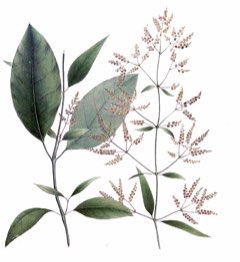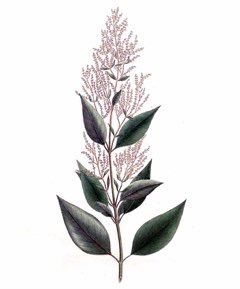 |
|
http://www.edibleplants.org |
 |
| http://www.edibleplants.org |
Translate this page:
Summary
Commonly found in South America, Pfaffia paniculata or also known as Pfaffia, Suma, or Brazilian ginseng is a tropical, large and shrubby vine that has a deep and extensive root system. Its root is used in traditional medicine as a general cure all herbal remedy. It is used as treatment for a wide range of health conditions and for restoring general health of a body. It is also used to improve one?s appetite, balance blood sugar levels, enhance immune system, and enhance memory. It is used in the treatment of anemia, diabetes, cancer, high blood pressure, PMS, menopause, hormonal imbalance and disorders, and many others.
Physical Characteristics

 Pfaffia paniculata is a CLIMBER growing to 1 m (3ft 3in) by 0.2 m (0ft 8in) at a fast rate.
Pfaffia paniculata is a CLIMBER growing to 1 m (3ft 3in) by 0.2 m (0ft 8in) at a fast rate.
See above for USDA hardiness. It is hardy to UK zone 10.
Suitable for: light (sandy), medium (loamy) and heavy (clay) soils, prefers well-drained soil and can grow in nutritionally poor soil. Suitable pH: mildly acid, neutral and basic (mildly alkaline) soils. It cannot grow in the shade. It prefers dry or moist soil.
UK Hardiness Map
US Hardiness Map
Synonyms
Gomphrena eriantha (Poir.) Moq. Gomphrena paniculata (Mart.) Moq. Hebanthe paniculata Mart. Iresine
Plant Habitats
Edible Uses
References More on Edible Uses
Medicinal Uses
Plants For A Future can not take any responsibility for any adverse effects from the use of plants. Always seek advice from a professional before using a plant medicinally.
Adaptogen Analgesic Antiarthritic Antibacterial Antifungal Antiinflammatory Appetizer Cancer
Hypotensive Tonic
Pfaffia root is a very important medicinal herb with a very long history of traditional use amongst the indigenous peoples of the Amazon region[318 ]. Regarded as a general cure-all, it was and is used as a tonic and rejuvenating herb to treat a wide range of illnesses and restore virility to the body[318 ]. In modern herbal medicine the root is considered to be an adaptogen and a tonic, able to increase the body's resistance to adverse influences by a wide range of physical, chemical, and biochemical factors and having a normalizing or restorative effect on the body as a whole[318 ]. It is taken to stimulate appetite and circulation; increase oestrogen production; balance blood sugar levels; enhance the immune system; strengthen the muscular system; enhance memory; and as a general restorative tonic after illness[318 ]. It is used to treat exhaustion and chronic fatigue; impotence; arthritis; anaemia; diabetes; cancer; high blood pressure; PMS, menopause, and hormonal disorders; and many types of stress[318 ]. The root contains 19 different amino acids, a large number of electrolytes, trace minerals, iron, magnesium, zinc, vitamins A, B1, B2, E, K , and pantothenic acid. Its high germanium content probably accounts for its properties as an oxygenator at the cellular level; its high iron content may account for its traditional use for anaemia. The root also contains novel phytochemicals including saponins, pfaffic acids, glycosides, and nortriterpenes[318 ]. Saponins are well known to have a wide spectrum of activities including lowering blood cholesterol; inhibiting cancer cell growth; and acting as antifungal and antibacterial agents[318 ]. They are also known as natural detergent and foaming agents[318 ]. Phytochemists report that saponins can act by binding with bile acids and cholesterol. It is thought that these chemicals 'clean' or purge these fatty compounds from the body (thus lowering blood cholesterol levels)[318 ]. The specific saponins found in the roots of suma include a group of novel phytochemicals named pfaffosides. These saponins have clinically demonstrated the ability to inhibit tumour cell melanomas and help to regulate blood sugar levels[318 ]. Pfaffia has demonstrated analgesic and anti-inflammatory activities in various studies[318 ].
References More on Medicinal Uses
The Bookshop: Edible Plant Books
Our Latest books on Perennial Plants For Food Forests and Permaculture Gardens in paperback or digital formats.

Edible Tropical Plants
Food Forest Plants for Hotter Conditions: 250+ Plants For Tropical Food Forests & Permaculture Gardens.
More

Edible Temperate Plants
Plants for Your Food Forest: 500 Plants for Temperate Food Forests & Permaculture Gardens.
More

More Books
PFAF have eight books available in paperback and digital formats. Browse the shop for more information.
Shop Now
Other Uses
Other Uses None known
Special Uses
References More on Other Uses
Cultivation details
References Carbon Farming Information and Carbon Sequestration Information
Temperature Converter
Type a value in the Celsius field to convert the value to Fahrenheit:
Fahrenheit:
The PFAF Bookshop
Plants For A Future have a number of books available in paperback and digital form. Book titles include Edible Plants, Edible Perennials, Edible Trees,Edible Shrubs, Woodland Gardening, and Temperate Food Forest Plants. Our new book is Food Forest Plants For Hotter Conditions (Tropical and Sub-Tropical).
Shop Now
Plant Propagation
Seed -
Other Names
If available other names are mentioned here
Pfaffia, ginseng brazilero, ginseng de l`amazone, ginseng, amazonisch, suma.
Native Range
SOUTHERN AMERICA: Brazil (Acre, Amazonas, Espírito Santo, Mato Grosso, Mato Grosso do Sul, Pará, Paraná, Rio de Janeiro, Roraima, Santa Catarina, São Paulo), Argentina (Misiones), Paraguay
Weed Potential
Right plant wrong place. We are currently updating this section.
Please note that a plant may be invasive in one area but may not in your area so it's worth checking.
Conservation Status
IUCN Red List of Threatened Plants Status : This taxon has not yet been assessed

Growth: S = slow M = medium F = fast. Soil: L = light (sandy) M = medium H = heavy (clay). pH: A = acid N = neutral B = basic (alkaline). Shade: F = full shade S = semi-shade N = no shade. Moisture: D = dry M = Moist We = wet Wa = water.
Now available:
Food Forest Plants for Mediterranean Conditions
350+ Perennial Plants For Mediterranean and Drier Food Forests and Permaculture Gardens.
[Paperback and eBook]
This is the third in Plants For A Future's series of plant guides for food forests tailored to
specific climate zones. Following volumes on temperate and tropical ecosystems, this book focuses
on species suited to Mediterranean conditions—regions with hot, dry summers and cool, wet winters,
often facing the added challenge of climate change.
Read More
Expert comment
Author
(Mart.) Kuntze
Botanical References
Links / References
For a list of references used on this page please go here
A special thanks to Ken Fern for some of the information used on this page.
Readers comment
| Add a comment |
|
If you have important information about this plant that may help other users please add a comment or link below. Only comments or links that are felt to be directly relevant to a plant will be included. If you think a comment/link or information contained on this page is inaccurate or misleading we would welcome your feedback at [email protected]. If you have questions about a plant please use the Forum on this website as we do not have the resources to answer questions ourselves.
* Please note: the comments by website users are not necessarily those held by PFAF and may give misleading or inaccurate information.
To leave a comment please Register or login here All comments need to be approved so will not appear immediately.
|
Subject : Pfaffia paniculata
|
|
|
|